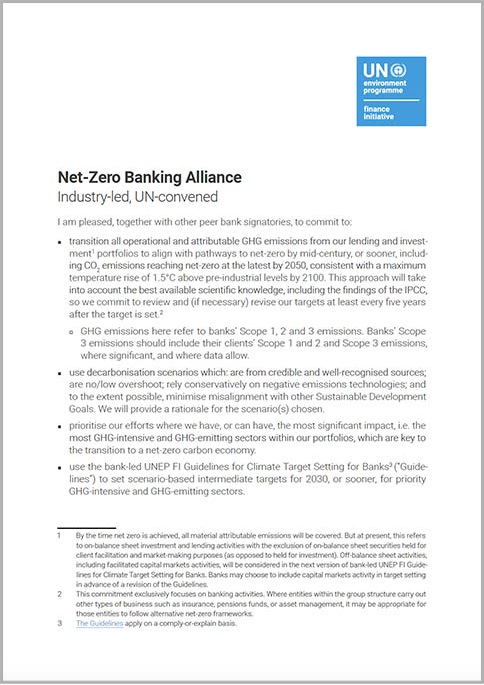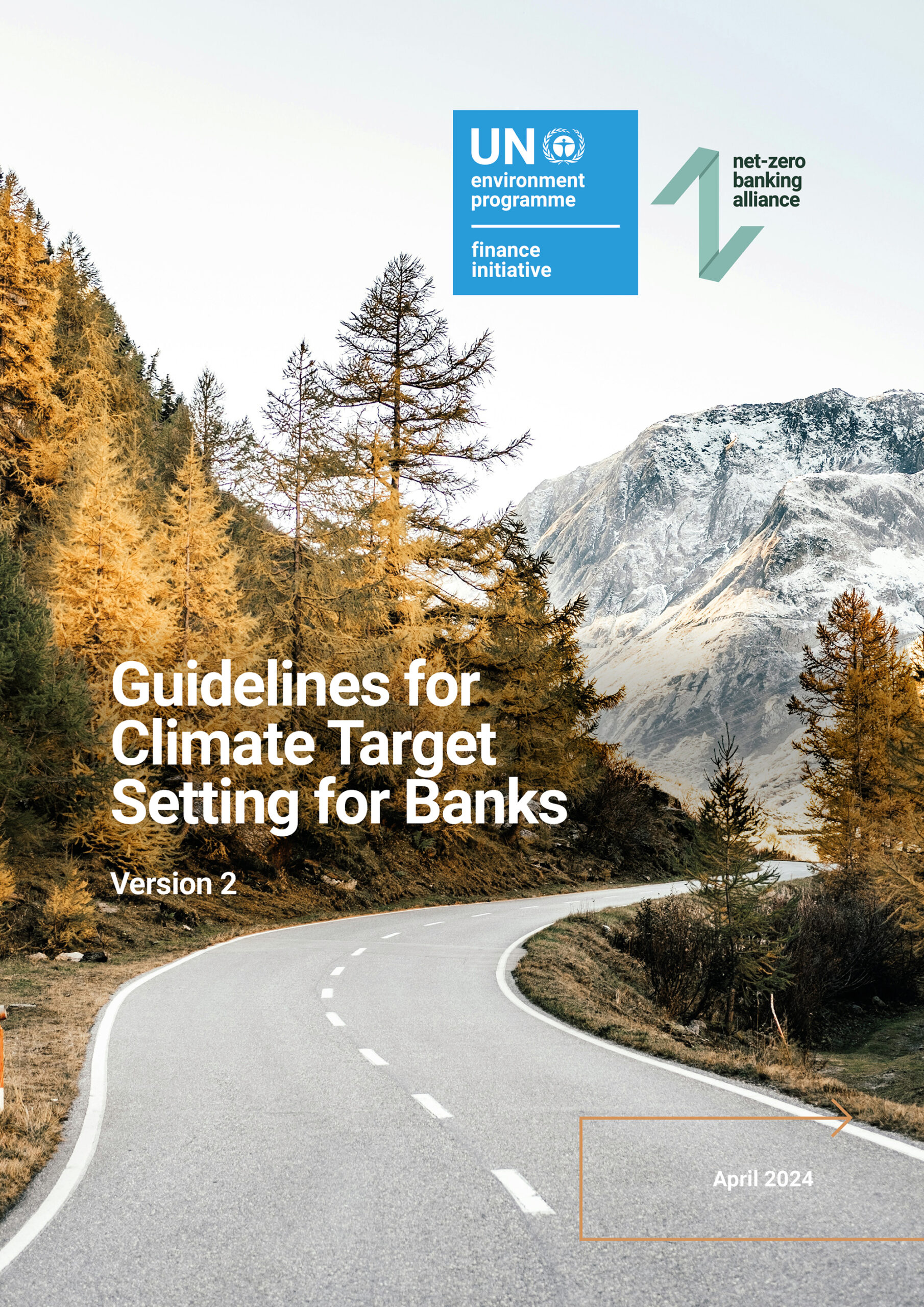All NZBA member banks have signed the Commitment Statement and pledged to follow the target setting and reporting processes outlined there and in the accompanying Guidelines for Climate Target Setting for Banks.
Commitment Statement
The Commitment Statement is a pre-requisite for joining the Net-Zero Banking Alliance, and is signed by a bank’s CEO. All banks that have signed the commitment will:
- Transition the operational and attributable greenhouse gas (GHG) emissions from their lending and investment portfolios to align with pathways to net-zero by 2050 or sooner.
- Within 18 months of joining, set targets for 2030 or sooner and a 2050 target, with intermediary targets to be set every 5 years from 2030 onwards.
- Banks’ first 2030 targets will focus on priority sectors where the bank can have the most significant impact, ie. the most GHG-intensive sectors within their portfolios, with further sector targets to be set within 36 months.
- Annually publish absolute emissions and emissions intensity in line with best practice and within a year of setting targets, disclose progress against a board-level reviewed transition strategy setting out proposed actions and climate-related sectoral policies.
- Take a robust approach to the role of offsets in transition plans.
Please note that the links on this page take you to the joint commitment statement for the Principles for Responsible Banking (PRB) and the NZBA. If you are already a PRB member and want to sign the additional commitment for the NZBA, or if you want to sign up to the NZBA only, contact us for a NZBA-only commitment statement using the form on this page.
Guidelines for Climate Target Setting for Banks
The commitment is underpinned by the bank-led UNEP FI Guidelines for Climate Target Setting for Banks. They outline four principles for target-setting:
-
- Banks shall set and publicly disclose long-term and intermediate targets to support meeting the temperature goals of the Paris Agreement.
- Banks shall establish an emissions baseline and annually measure and report the emissions profile of their lending portfolios and investment activities.
- Banks shall use widely accepted science-based decarbonisation scenarios to set both long-term and intermediate targets that are aligned with the temperature goals of the Paris Agreement.
- Banks shall regularly review targets to ensure consistency with current climate science.
Review these Supporting Notes for the guidelines for additional clarification on target-setting.

